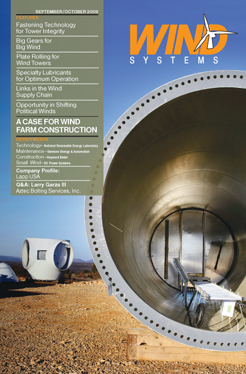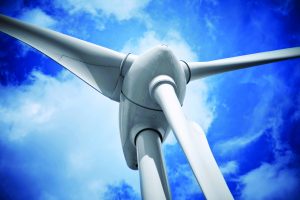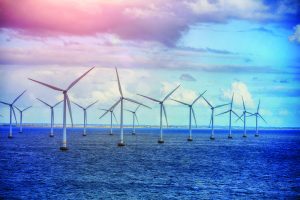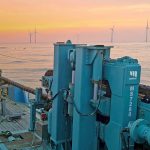Almost all large wind turbines available on the market today have been certified by an international certification body through a comprehensive design evaluation, testing, and quality-manufacturing review process. When these turbines are introduced into the U.S. market they must also satisfy local requirements for items such as structural and electrical permits. As offshore wind plants are developed on the Outer Continental Shelf (OCS), they will also have to meet national requirements set by the U.S. Department of the Interior Minerals Management Services (MMS). Many of these local and national requirements are likely to be compatible with international standards. However, local and national requirements are not likely to capitalize on the detailed design evaluation that has already been successfully completed by an international certification body working closely with the manufacturers.
These reviews dig deeply into the design issues such as safety and function control strategy, load predictions, dynamics, stress analysis, mechanical design, electrical design, and even the foundation designs. The international certification body is also required to review all test data used to verify these designs as well as the manufacturing quality plan, thus providing a much more comprehensive review of the turbine design than a local engineer is likely to accomplish. However, local engineers are far more capable of assessing how a particular design is suited to local structural and electrical requirements or, in the case of offshore turbines on the OCS, the local MMS regulations. For these reasons the AWEA Standards Coordinating Committee (SCC) has authorized a committee to develop a document that will clearly identify typical and specific U.S. national wind turbine design requirements that are compatible with the International Electrotechnical Commission (IEC) requirements.
The committee will make every attempt not to develop new technical requirements, but will capitalize on existing standards, particularly IEC standards. National wind turbine design standards should facilitate compliance verification activities by local inspectors and project developers attempting to permit turbines that have been certified to international standards and could become AWEA standards recognized by the American National Standards Institute (ANSI). Whether or not these standards start as a guideline and mature to full voluntary standards will be decided by the committee/s and ultimately approved by the AWEA SCC through their ANSI approval process. This standards document must be developed with broad representation from all the invested stakeholders. The final product should be a living document that links the U.S. national requirements to international standards (IEC).
It will require input from experts who work with wind turbines, understand U.S. and/or IEC standards, inspect and approve wind plant installations, regulate wind plant installations, install wind plants, or are otherwise invested in the success of the wind industry. On October 27-28, 2009, NREL will host a meeting at the Omni Interlocken in Broomfield, Colorado, to discuss the development of these guidelines with industry experts.
Topics of discussion may include:
• Scope and purpose of document (or documents);
• General organization of the document;
• Approach, including formation of subcommittees to address topics such as electrical requirements, structural requirements, and offshore requirements;
• Appointment of leaders and secretaries for the committee and subcommittees;
• Milestones and target schedules;
• Logistics (net meetings, document logistics, etc).
Although NREL and AWEA hope that a broad representation from all the invested stakeholders will attend this initial meeting, only technically qualified persons will be encouraged to assist in developing the large turbine certification guidelines. The development of the guidelines, which may eventually become AWEA standards, is expected to take a year or more and will entail the review of multiple drafts of a guidelines document.
































